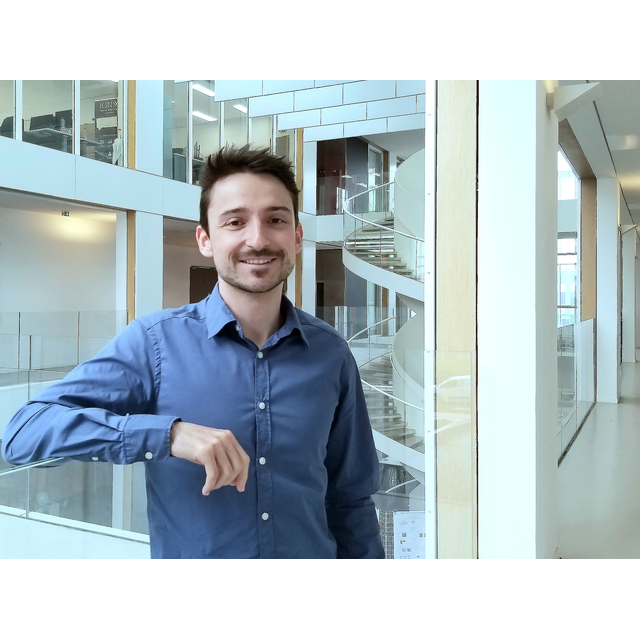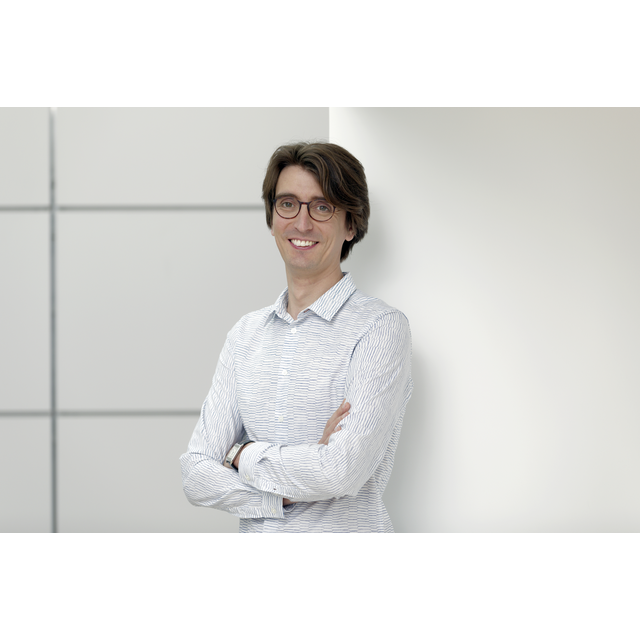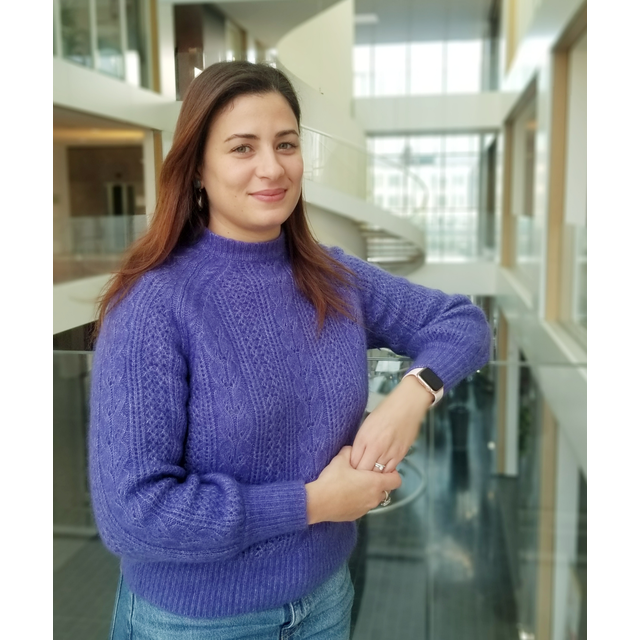David González Andrade grew up in a small town in southern Spain, where he studied until high school. His great curiosity and interest in applied physics and new technologies led him to enroll in the Telecommunication Engineering degree. In 2014, he received his BSc in Telecommunication Technologies Engineering from the University of Málaga. Two years later, he obtained his MSc in Telecommunication Engineering also from the University of Malaga. He developed his Master's Thesis in the Photonics and Radiofrequency Laboratory group, for which he received the TELTRONIC Award for the Best Master's Thesis from the Spanish Official College of Telecommunications Engineers.
In November 2016, he joined the Nonlinear Dynamics and Fiber Optics group at the Institute of Optics "Daza de Valdés" of the Spanish National Research Council (CSIC). In May 2017, he was awarded a national predoctoral fellowship to develop the PhD in the same group working on the exploitation of subwavelength metamaterials for the design of high-performance photonic microdevices. During his PhD, he collaborated with the spin-off company Alcyon Photonics S. L. and was a visiting researcher at the University of Malaga, the National Research Council of Canada, McGill University and the Centre de Nanosciences et de Nanotechnologies. Three years later, in April 2020, he obtained his PhD in Physics from the Complutense University of Madrid. The important advances in the fields of mode division multiplexing, optical phase shifting and power division reported in his thesis resulted in two awards, one by the Spanish Official College of Telecommunications Engineers and the other by the City Council of Madrid.
Thanks to having presented his doctoral thesis in only three years, he was awarded a postdoctoral contract at the Institute of Optics. During this one-year period he worked on the assembly of an experimental setup, and the development of SiN circuits for near-infrared spectroscopy applications and dual-band grating couplers for 10 Gbit passive optical networks. Since mid-2021, he serves as a postdoc at the Center for Nanosciences and Nanotechnologies (C2N). Here, his research has been focused on developing photonic components for mode- and polarization-division handling, and he also began to work on optomechanical silicon waveguides for integrated Brillouin photonics. The latter line of research served as the basis for his MSCA SUNRISE project.
The MSCA SUNRISE Project
Light technologies have revolutionized society by providing access to information, promoting sustainable development, and increasing societal health and well-being. High-performance photonic integrated circuits could enable a new revolution, underpinning the widespread deployment of light-enabled applications in sensing, 5G-6G communications, light detection and ranging, metrology and quantum. Silicon photonics holds the promise for large-scale, low-cost production of high-performance optoelectronic circuits leveraging existing complementary-metal-oxide semiconductor manufacturing infrastructure. However, addressing the needs of these emerging applications requires developing key building blocks that are not feasible in state-of-the-art silicon photonics technology.
Three-dimensional schematic representing a subwavelength silicon membrane: uncovering the unique potential to tailor the properties of photons and phonons
SUNRISE (Silicon brillouin-assisted optoelectronic oscillator based on subwavelength membranes) is a multidisciplinary project that aims to overcome these constraints by exploiting Brillouin light-sound interactions. Stimulated Brillouin scattering has been at the core of recent stunning demonstrations of key on-chip functionalities, but approaches demonstrated so far are mainly limited by trade-off between phonon lifetime and photon-phonon overlap. The original idea is to exploit the unique degrees of freedom released by subwavelength Si nanostructuration to achieve flexible control of the shape and dispersion of optical and mechanical modes in order to maximize optomechanical coupling and Brillouin gain. This approach will ultimately be used to demonstrate a silicon optoelectronic oscillator with reduced phase-noise compared to the state of the art.
Acknowledgements
My first memory of C2N goes back to 2017 when I was in my first year of my PhD. I still remember when my supervisor Dr. Aitor V. Velasco told me that he met Dr. Carlos Alonso-Ramos and Dr. Laurent Vivien at a conference and proposed me to do a stay at the "Institut d'Électronique Fondamentale" with them. Finally I stayed 3 months and my experience could not have been more enriching: a welcoming and hard-working team (MINAPHOT), a state-of-the-art technological environment and, above all, being surrounded by talented and supportive people. It was a pleasure to work with the entire MINAPHOT team and during my stay it was like a second home. Due to the success of the first stay, in 2019 I came back for another 3 month stay, but this time at C2N.
I would like to express my deepest gratitude to Dr. Carlos Alonso-Ramos and Dr. Laurent Vivien for this unique opportunity, and for opening the doors of their group to me whenever needed. My thanks also go to the whole MINAPHOT group including PhD students, postdocs and permanent researchers, for your unlimited help and good vibes. Getting this far would not have been possible without a great number of people since I started my research. My special thanks go to my thesis supervisors Dr. Aitor V. Velasco and Dr. Pedro Corredera Guillén who gave me the opportunity to start this research journey and guide me. I also have to thank my co-workers of the Nanoscale and nonlinear guided optics group of the IO-CSIC. I have also had the pleasure of working with many brilliant people such as the Photonics and RF lab group at the University of Malaga, with STMicroelectronics in Crolles, the National Research Council of Canada, Alcyon Photonics and the Electrical and Computing Engineering group at McGill University.
David and Carlos Alonso-Ramos @C2N, 2022
On the financial side, I would like to acknowledge the support from the Spanish Ministry of Science and Innovation, the Community of Madrid and the European Union for the funding granted to the projects and the public grants I have been awarded during my professional career.
Finally, I do not have enough words to express my gratitude to my family. I deeply appreciate all your advices and sacrifices, and your unwavering trust in me. Thank you for being there every time I needed and especially for understanding me in difficult times.









